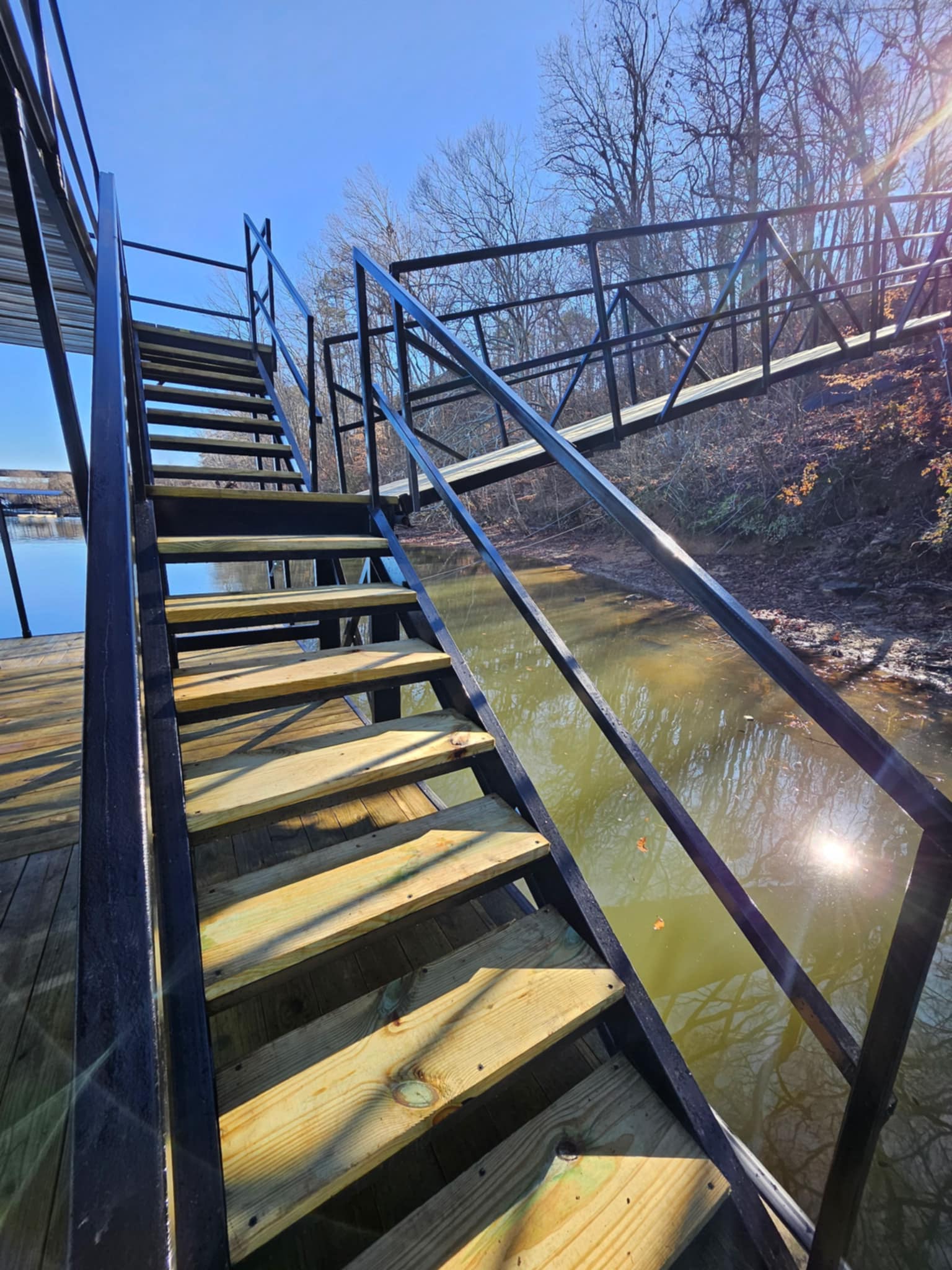Invasive Aquatic Plants That Are A Threat To Our Beloved Lake Hartwell | Keep A Look Out And Do Your Part To Help!
- Mid-Lake Dock and Hardscape

- Feb 28
- 3 min read
Updated: Apr 15
All of us at Mid-Lake Dock and Hardscape deeply love Lake Hartwell and are committed to preserving its natural beauty and health. As a vital part of the community, we believe in taking proactive steps to protect the lake. Lake Hartwell is more than just a body of water—it is our home. It is where we fish, boat, swim, and make lifelong memories with family and friends. Protecting its health and natural beauty is our shared responsibility, ensuring that future generations can continue to enjoy all that it has to offer.

Invasive Aquatic Plants Threatening Lake Hartwell and the Waterways of Georgia and South Carolina
Georgia and South Carolina’s lakes, rivers, and wetlands are under threat from invasive aquatic plants that disrupt ecosystems, harm native species, and impact recreational activities. Two of the most problematic species are Giant Salvinia and Hydrilla, both of which spread aggressively and are difficult to control.
Giant Salvinia: The Floating Menace
Giant Salvinia is a free-floating fern notorious for its rapid growth—it can double in biomass in just 10 days or less! This fast spread allows it to form thick mats on the water’s surface, blocking sunlight and reducing oxygen levels, which can be devastating to fish and other aquatic life. One key feature that distinguishes Giant Salvinia from the more common Salvinia species is the presence of unique, “egg beater”-shaped hairs on its leaves.
If you suspect Giant Salvinia in your area, it is crucial to act quickly. Contact the Georgia DNR Wildlife Resources Division Fisheries Office or the South Carolina Department of Natural Resources to report sightings and prevent further spread.

Hydrilla: The Underwater Invader
Hydrilla, an invasive aquatic plant native to Eurasia, first appeared in the United States in the 1960s and has since become one of the most persistent invaders in Southern waterways. It grows in dense underwater mats, outcompeting native vegetation and clogging waterways. Hydrilla can also interfere with boating, fishing, and swimming, making it a serious nuisance for both wildlife and humans.


Other Invasive Aquatic Plants in the Southeast
Giant Salvinia and Hydrilla aren’t the only threats to Georgia and South Carolina’s aquatic ecosystems. Several other invasive plant species have taken root in the region, including:
Alligatorweed
Brazilian waterweed
Water hyacinth
Dotted duckweed
Water primrose
Marsh dewflower
Parrotfeather
Eurasian water-milfoil
Brittle naiad
Torpedo grass
Each of these species poses unique risks, from displacing native plants to obstructing water flow and altering habitats.
How You Can Help
Preventing the spread of invasive aquatic plants requires community effort. Here are some steps you can take:
Inspect and clean boats, trailers, and fishing gear before and after entering waterways.
Never dump aquarium plants or aquatic vegetation into natural water bodies.
Report sightings of invasive plants to local wildlife authorities. Mid-Lake Dock encourages all visitors and residents to keep an eye out for these invasive species and do their part in preventing their spread.
For more information on aquatic nuisance species in Georgia and South Carolina, visit georgiawildlife.com/ans or dnr.sc.gov. By staying informed and taking action, we can help protect Lake Hartwell and our other waterways from these invasive threats.
“We have fallen heirs to the most glorious heritage a people ever received, and each one must do his part if we wish to show that the nation is worthy of its good fortune.” Theodore Roosevelt



Bibliography
Georgia Department of Natural Resources, Wildlife Resources Division. “Aquatic Nuisance Species.” https://georgiawildlife.com/ans
South Carolina Department of Natural Resources. “Aquatic Invasive Species.” https://www.dnr.sc.gov
Vidéki, Robert, Doronicum Kft. “Salvinia molesta (Giant Salvinia).” Invasive Plant Atlas of the United States. https://www.invasive.org/alien/pubs/midatlantic/samo.htm
Moorhead, David J., University of Georgia. “Hydrilla verticillata (Hydrilla).” Invasive Plant Atlas of the United States. https://www.invasive.org/alien/pubs/midatlantic/hyve.htm
Center for Invasive Species and Ecosystem Health. Bugwood Network. University of Georgia. https://www.invasive.org
U.S. Geological Survey (USGS). “Nonindigenous Aquatic Species Database.” https://nas.er.usgs.gov
Roosevelt, Theodore. Quoted in The Works of Theodore Roosevelt: American Ideals. G.P. Putnam’s Sons, 1900.









Comments